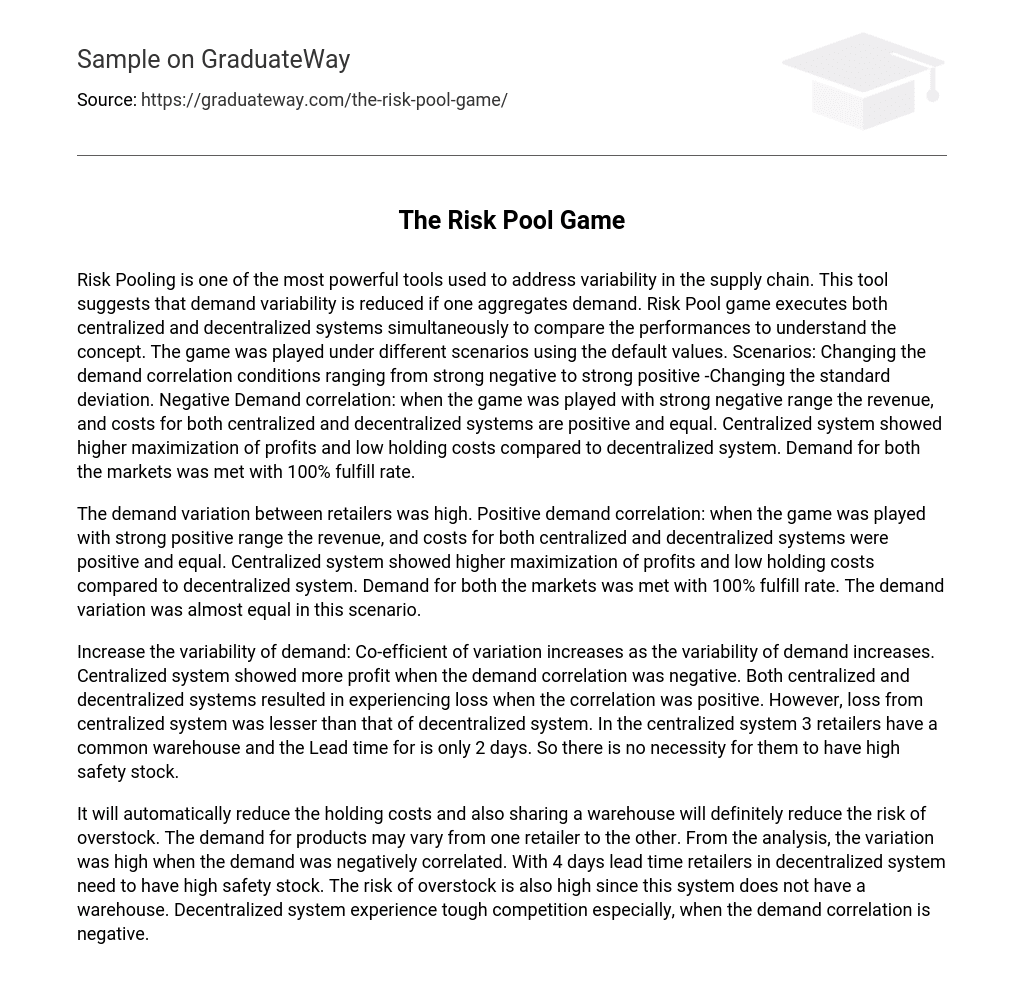Risk Pooling is one of the most powerful tools used to address variability in the supply chain. This tool suggests that demand variability is reduced if one aggregates demand. Risk Pool game executes both centralized and decentralized systems simultaneously to compare the performances to understand the concept. The game was played under different scenarios using the default values. Scenarios: Changing the demand correlation conditions ranging from strong negative to strong positive -Changing the standard deviation. Negative Demand correlation: when the game was played with strong negative range the revenue, and costs for both centralized and decentralized systems are positive and equal. Centralized system showed higher maximization of profits and low holding costs compared to decentralized system. Demand for both the markets was met with 100% fulfill rate.
The demand variation between retailers was high. Positive demand correlation: when the game was played with strong positive range the revenue, and costs for both centralized and decentralized systems were positive and equal. Centralized system showed higher maximization of profits and low holding costs compared to decentralized system. Demand for both the markets was met with 100% fulfill rate. The demand variation was almost equal in this scenario.
Increase the variability of demand: Co-efficient of variation increases as the variability of demand increases. Centralized system showed more profit when the demand correlation was negative. Both centralized and decentralized systems resulted in experiencing loss when the correlation was positive. However, loss from centralized system was lesser than that of decentralized system. In the centralized system 3 retailers have a common warehouse and the Lead time for is only 2 days. So there is no necessity for them to have high safety stock.
It will automatically reduce the holding costs and also sharing a warehouse will definitely reduce the risk of overstock. The demand for products may vary from one retailer to the other. From the analysis, the variation was high when the demand was negatively correlated. With 4 days lead time retailers in decentralized system need to have high safety stock. The risk of overstock is also high since this system does not have a warehouse. Decentralized system experience tough competition especially, when the demand correlation is negative.





